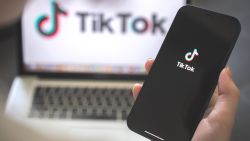SoftBank CEO Masayoshi Son has been shaking up the global tech industry and Silicon Valley, using his $100 billion Vision Fund to pour money into splashy startups like Uber, Slack and WeWork.
But Son, and the Vision Fund’s investing prowess, are coming under growing scrutiny after WeWork’s botched IPO and the ouster of its chief executive, as well as the poor stock market performances of Uber (UBER) and Slack (WORK) since their public debuts.
The Japanese tech giant booked more than $11 billion in profits from the Vision Fund and a related fund in its last fiscal year, but analysts are now marking down the value of its assets and say SoftBank could be forced to write off billions of dollars as a result. That could undermine plans for a second giant tech fund.
Adam Neumann stepped down as chief executive of WeWork’s parent company this week, following a disastrous attempt to take the firm public. The We Company announced it would delay its highly anticipated Wall Street debut as investors balked at its valuation and criticized the shared workspace provider’s corporate governance.
Souring tech IPOs hurt SoftBank
Acting quickly to shore up one of their biggest investments could bode well for SoftBank, WeWork’s biggest shareholder. But Neumann’s ouster doesn’t change The We Company’s market value problems. Shares in SoftBank fell by more than 2% in Tokyo the day after he stepped down.
The Vision Fund and SoftBank took part in multiple funding rounds over two years, pumping nearly $11 billion into The We Company and taking a stake of between 27% and 29%, according to brokerage firms CLSA and Bernstein Research. The last funding round SoftBank participated in back in January valued the startup at $47 billion.
But potential investors balked at that number, and the lossmaking company reportedly considered cutting its valuation to as low as $10 billion before canceling its IPO.
Beyond WeWork, Uber’s stock price has plunged 30% since its public debut. SoftBank’s Vision Fund invested more than $7 billion in the ride hailing firm in 2017. The fund is Uber’s largest shareholder with a 13% stake, according to financial data provider Refinitiv.
Uber CEO Dara Khosrowshahi told CNN in an interview this week that the company’s business is “absolutely sustainable,” despite losing more than $5 billion in three months.
Slack is also down 40% from a June high and down 25% from the reference price set when it went public. The SoftBank Vision Fund holds a 7.3% stake in Slack, according to brokerage firm Daiwa.
“Valuations in the private equity market, where participants are limited to venture capital firms, can lose credibility before shares are listed. Profit in [SoftBank’s Vision Fund] business can slump when it is based on such valuations,” Daiwa analyst Yoshi Ando wrote in a note earlier this month.
SoftBank says it has an appropriate process to value companies which is based on widely accepted methodologies set out by the International Financial Reporting Standards foundation.
The company reported operating profit for the Vision Fund and an affiliated fund rose 65% to 398 billion yen ($3.6 billion) for the three months ended in June.
What happens now?
The Japanese tech company is planning to launch Vision Fund 2, with the likes of Apple (AAPL), Foxconn, the National Bank of Kazakhstan and others signing memorandums of understanding to take part in the next mega tech fund. Son said in August that negotiations for Vision Fund 2 are ongoing, and he expects the fund to start investing by next month.
But the disclosure of WeWork’s operations exposed not only problems under the hood at a Silicon Valley darling, but also revealed that SoftBank is willing to invest billions of dollars into a company with some glaring governance issues. That could spook investors and hurt Vision Fund 2, according to Scott Galloway, marketing professor at New York University’s Stern business school.
“Vision Fund 2 is already dead. Any discussion from Softbank regarding [Vision Fund 2] is propaganda,” Galloway said.
“The Saudi investment fund has already stated they will only invest in [Vision Fund 2] the profits from [Vision Fund 1], which is a polite way of saying we aren’t investing,” he added. Saudi Arabia’s Public Investment Fund provided nearly half the money for the first Vision Fund. Son said last month that SoftBank was “still in negotiations” with the Saudis regarding an investment in the new mega fund.
Bernstein Research analyst Chris Lane is more bullish, calling the WeWork IPO a “rare debacle” for SoftBank and its strategy.
“I doubt the types of investors that are in discussions regarding [Vision Fund 2] will change their mind,” Lane said.
“However, they are likely to insist on better governance for the fund in terms of transparency of decision making, and are likely to insist on governance standards for the investee companies,” he said.
Lane estimates SoftBank invested in We at an average valuation of $24 billion. He said if the company goes public with a $10 billion valuation, that would result in a $2.4 billion write-down for the Vision Fund.
Jefferies analyst Atul Goyal said in a recent research note that the fund will also have to take a loss on Uber. He calculated that Uber’s 30% decline in market value since the end of June would result in a $3.9 billion hit to the Vision Fund for this quarter.
Goyal did not include Slack in his calculations. The company took an unconventional approach to go public in late June, setting a reference price of $26 per share. Slack fell below that reference price earlier this month.
The Vision Fund ‘has pneumonia’
SoftBank’s Vision Fund has invested in about 80 companies. The vast majority of them are still private and there isn’t a lot of clarity about how the fund operates. Investors in SoftBank want to see “a more simple, easier-to-understand business portfolio,” said Daiwa’s Ando.
Brokerage firm CLSA cut its valuation for the Vision Fund last week.
“We have refined our approach [to the Vision Fund] by taking a harsher approach to asset values based on those which are listed and applying valuations to the private companies that we are more familiar with” such as WeWork, CLSA analyst Oliver Matthew said in a research note. For other companies, CLSA lobbed 30% off the price the fund paid.
Based on those assumptions, Matthew estimates the asset value of the Vision Fund is $39 billion, which is a lot less than the $65 billion the fund spent gobbling up stakes in all those different tech companies.
A SoftBank spokesman declined to comment for this article.
Son said in August that once 85% of the first Vision Fund is used, which he expects to happen by the end of this month or next, SoftBank will start using Vision Fund 2. The “basic rule” for the first Vision Fund is to keep 15% for follow-on investments or distribution for preferred shareholders of the fund, he said.
Son also boasted about the Vision Fund’s performance, saying it had so far invested 7 trillion yen ($65.2 billion) in various companies and brought in “2 trillion yen ($18.6 billion) in profit and return.”
“That’s the track record of Vision Fund 1,” he said.
But as WeWork and Uber show, just a couple bad investments can deal a big blow to that record.
With nearly $20 billion invested in Uber and We, the Vision Fund “is impaired,” said Galloway, the NYU professor.
“If either of these firms sneeze, because of the scale of the capital that’s gone into them, [Vision Fund] gets a cold. Right now, [Vision Fund] has pneumonia,” he said.

























